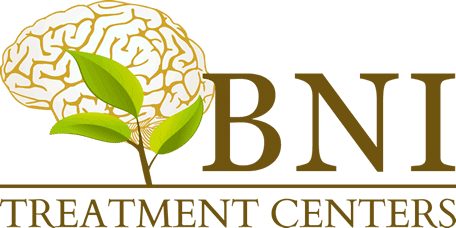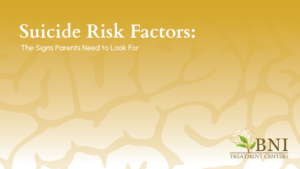One of the most troubling statistics about the resurgence of heroin abuse in recent years is the rise in teens who dabble in prescription opioids and then find themselves using heroin when the cost of the opioid becomes untenable. According to information provided by the National Institute on Drug Abuse, the greatest increase in heroin abuse is among young adults aged 18-25. Because some teens do experiment with opiates, it is wise for parents to be aware of the signs of heroin abuse in teens.
To add to the already inherent dangers of opioid or heroin abuse, today’s drug supplies may be tainted with fentanyl. Since 2016 the overdose rates have skyrocketed due to the presence of the potent synthetic opioid, fentanyl, in heroin or pills bought on the street. In 2016 approximately 19,000 deaths related to opioids involved fentanyl, which is significantly more potent than morphine or heroin.
Understanding the signs of heroin abuse in teens is an excellent first proactive step. When a parent begins to notice the signs and symptoms of heroin abuse in their adolescent they can act swiftly to get their teen the help they need. The earlier this intervention is made, the better the recovery outcome.
Some Facts About Heroin
Heroin is a highly addictive illicit substance derived from morphine, which comes from opium that is derived from the seedpod of the poppy flower. This particular type of poppy plant, named papaver somniferum, is indigenous to Southeast and Southwest Asia, Mexico and Columbia. In its pure form heroin is white, but on the street the heroin is usually a brown or off-white powder, or black sticky substance referred to as black tar.
Heroin is taken into the body in a variety of ways, usually snorted, smoked, or injected. On the street heroin is commonly cut with other substances or drugs, making it either diluted, as when cut with sugar or caffeine powder, or extremely deadly, as when cut with fentanyl. Heroin is an illegal narcotic, a Schedule I controlled substance in the U.S., meaning that it has no inherent medical value and is dangerously addictive.
The short-term effects of heroin include:
- Warm flushing of the skin
- Severe itching
- Heavy limbs
- Nausea and vomiting
- Dry mouth
- Fatigue
- Clouded thinking
- Slowed heart rate
- Waver between conscious and semiconscious state
The long-term effects of heroin include:
- Insomnia
- Mood disorders
- Problems with impulse control
- Cognitive issues
- Constipation
- Sexual dysfunction in men
- Irregular menstrual cycles for women
- Collapsed veins
- Damaged nasal tissue
- Infection of the heart lining
- Lung and respiratory problems
- Respiratory arrest
- Unresponsiveness
- Coma
- Death
Prescription Opioids to Heroin Use
For some teens, the journey to heroin abuse begins with a sports injury. Doctors often prescribe opioids to control pain for up to a week or more. For some teens, that is all it takes to develop an addiction. When the prescription runs out, the teen who has become addicted to the opioid will begin to feel sick, as the onset of withdrawal symptoms emerge. If the doctor will not refill the prescription the now addicted teen patient becomes desperate. They may begin to search for the opioids online, steal pills from parents or friends, or purchase the pills on the street. But when all avenues dry up or the pills become too expensive to support the habit, the teen may seek out heroin as a replacement.
West Virginia Attorney General Patrick Morrisey has spearheaded an initiative to create awareness about the connection between sports injuries among student athletes and subsequent addiction. Morrisey states, “Many people think injuries are the biggest threat student athletes will face, but reality shows the medicine they’re prescribed after an injury could present another danger.”
Heroin is also an opioid, created from morphine, which is derived from the opium poppy plant. Prescription opioids have a similar effect to heroin, so gravitating to heroin when the synthetic opioids are no longer available or affordable is a natural step for the addict to take. According to the National Institute on Drug Abuse, about 80% of heroin users report first misusing prescription opioids. Heroin offers these individuals a more potent high at a fraction of the cost.
The Signs of Heroin Abuse in Teens
Parents should follow their gut feeling if their child begins exhibiting the following signs of heroin abuse in teens:
- Constipation. Chronic constipation is a common adverse effect associated with opioids or heroin use.
- Paraphernalia. Finding rolls of aluminum foil, burnt spoons, syringes, rubber tubing, cut straws or empty pens, small baggies, or glass pipes are signs of heroin abuse.
- Mood changes. Adolescence is marked by excessive moodiness anyway, but if the teen becomes very withdrawn, depressed, agitated, anxious, or has wide mood fluctuations it could be a sign of substance abuse. If the teen seems unusually euphoric or alternately drowsy and moving slowly it could be signs of heroin use.
- Secretive behavior. While normal for teens to seek privacy, when the teen also begins exhibiting shady behaviors, avoiding eye contact, or isolating themselves it is a sign of possible drug use.
- Sudden change in weight. When your teen suddenly loses or gains weight for no apparent reason, it could be a sign of heroin abuse. Other physical signs include a pale skin tone, runny nose, and constricted pupils.
- Money is missing. If you notice money disappearing from your wallet or any other items missing it could be a sign the teen is engaging in heroin use and stealing money to fund the habit.
- Change in academic performance. If the teen’s grades suddenly drop and/or the teen has been repeatedly truant these are indications that they may be involved in drug use. Also, if they begin to hang out with a different group of friends at school or outside of school.
- Memory problems. The teen may struggle to remember things, such as completing or turning in school assignments, forget where they placed their keys, forgot about doctor appointments, or forget about extracurricular obligations.
When a teen has apparently developed a drug problem it is essential that parents have their child evaluated as early as possible. A medical exam may provide a physician with enough information that they can refer the teen to a residential teen recovery program.
Teen Treatment for Heroin Addiction
When it is determined that a teen has acquired a heroin habit the first priority in treatment will be to complete a medical detox. Medical detox involves the process of eliminating the toxins related to the heroin while under the supervision of medical addiction specialists. During detox the teen will be closely monitored and provided medications that will help relieve uncomfortable withdrawal symptoms. Once detox and withdrawal has been completed the teen will be ready to participate in the treatment program.
The following treatment elements will be involved in teen heroin addiction recovery:
Psychotherapy: Evidence-based therapies used for teen addiction treatment center on behavioral psychotherapy modalities. One of the most effective is cognitive behavioral therapy (CBT), which can help the teen restructure the thought and behavior responses that have established the drug-seeking patterns. CBT teaches the adolescent to examine their self-destructive behavioral responses to certain disordered thought patterns, and to use new coping tools to shift these toward healthy and productive responses. Other effective psychotherapies include dialectical behavior therapy (DBT) and contingency management.
Family therapy. Comprehensive treatment for teen substance abuse will include family-focused therapy. The family is the core social environment for an adolescent so family therapy must be an integral aspect of teen recovery efforts. Family members can work through some of the emotional impact of how the heroin addiction affected the family unit, such as the deception and broken trust bonds that resulted. Family therapy also provides the tools to improve communication, boundary setting, and educating the family members about their loved one’s recovery process.
Peer group therapy. Small peer groups are a staple in teen addiction recovery programming. These intimate forums allow the teens to share with each other about their experiences, emotional struggles, family issues, and to gain peer support as a result. Teens may also participate in a recovery support group, such as Teen Addiction Anonymous, that provides support during and following treatment.
Relapse prevention planning. Like anyone else in recovery for a heroin or opioid addiction, teens will need to create an individualized relapse prevention plan. Working with a counselor, the teen will identify the possible triggers, situations, people, or events that could lead them to a relapse. Creating a relapse prevention plan will cite the triggers along with the actions to take should the teen encounter them. A relapse prevention plan can become a foundational tool in recovery.
Aftercare. Completing a teen rehab program for heroin addiction is only the first step in the recovery process. Ongoing aftercare efforts should be included in the post-rehab planning for a sustained and successful recovery. These include outpatient therapy, teen support groups, establishing a healthier lifestyle including diet, exercise, and quality sleep, and having a strong family support system in place.
BNI Treatment Centers for Residential Teen Treatment
BNI Treatment Centers is a residential mental health and dual diagnosis program for teens ages 12-17. The specific treatment plan will depend on the teen’s substance use history and if there is a co-occurring mental health disorder. For some teens with moderate to severe addiction issues, a medical detoxification will be the first step in recovery, which allows the body to stabilize while it adjusts to the absence of the heroin.
For more detail about the integrative program, please reach out to BNI Treatment Centers at (888) 522-1504.



